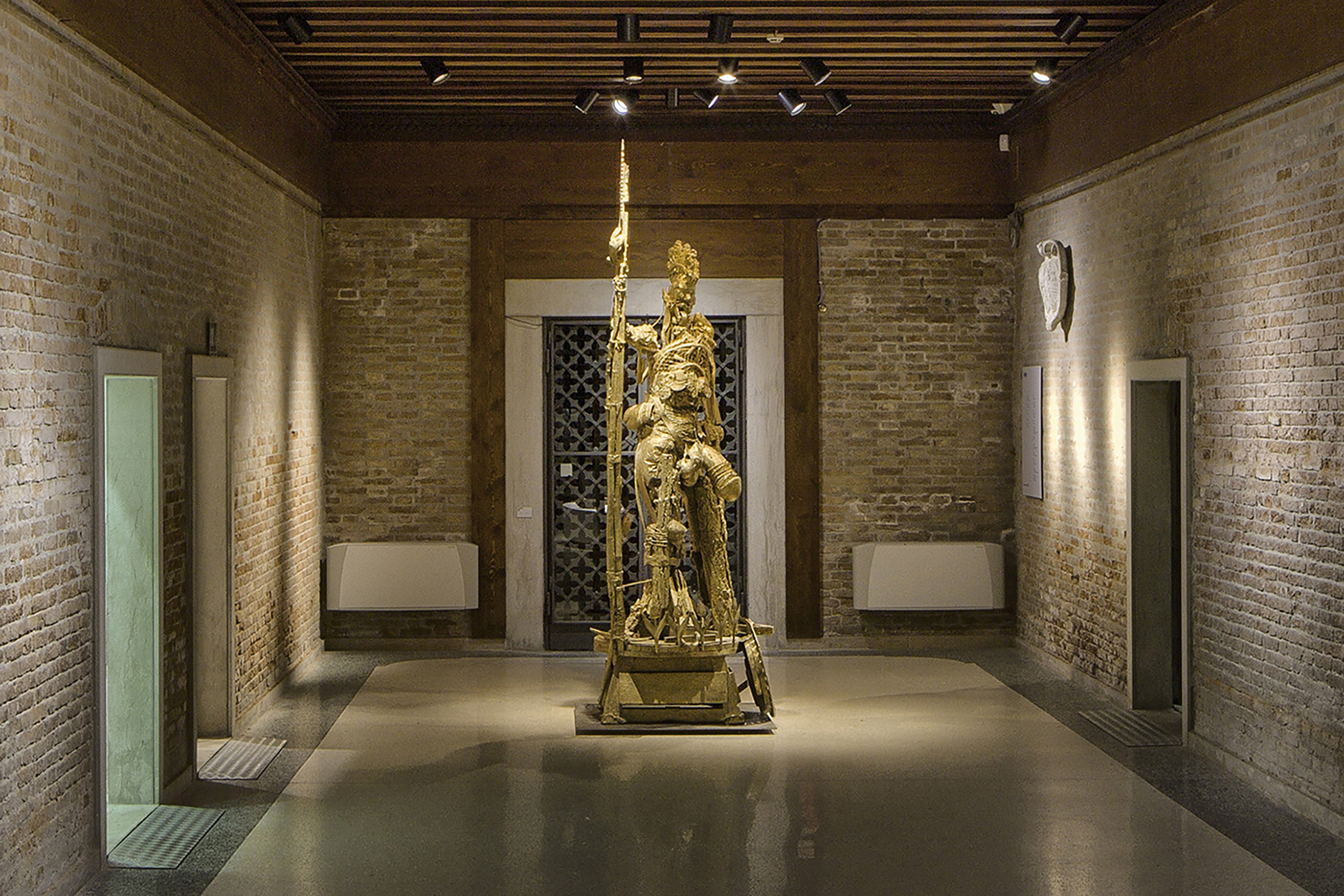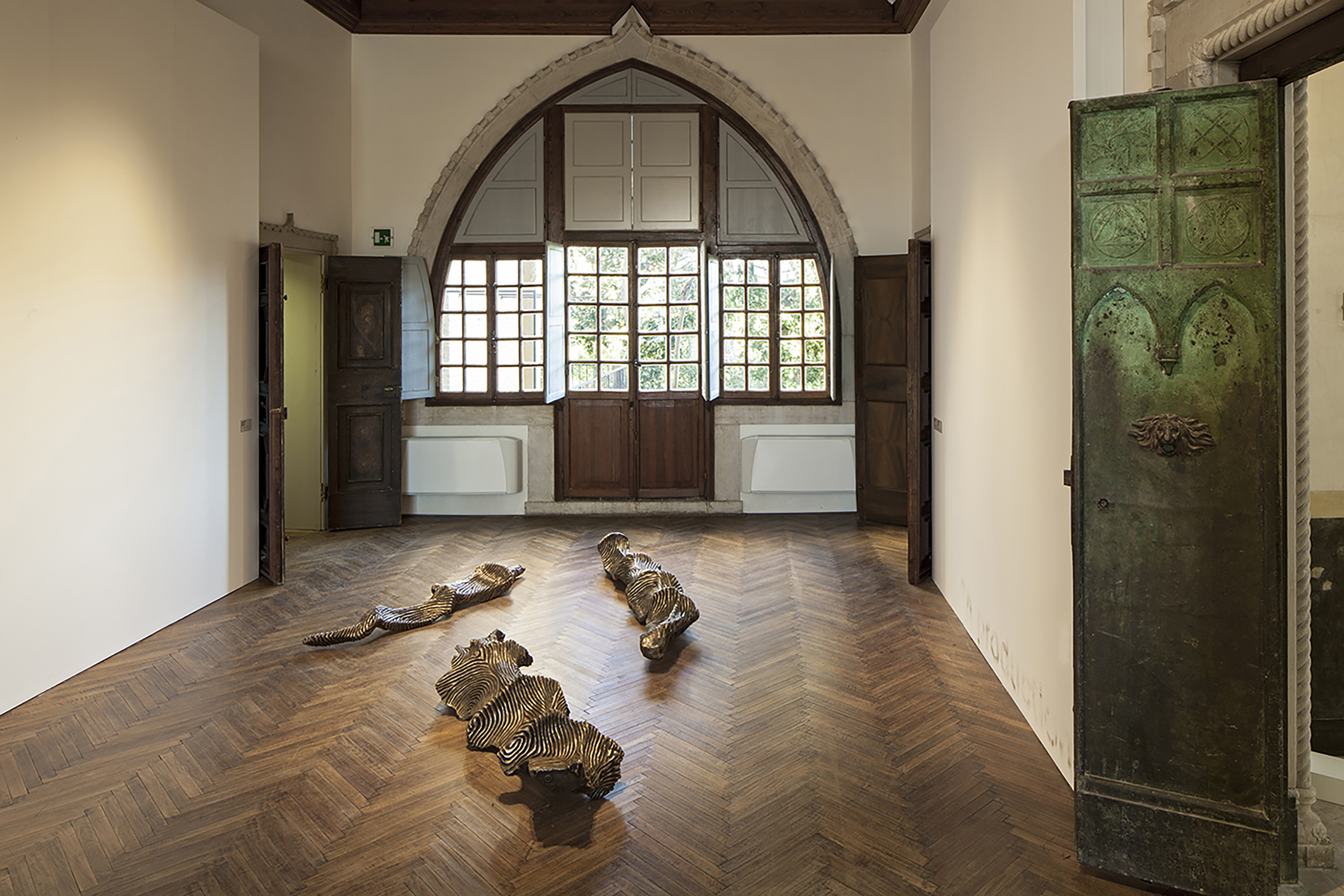Paweł Althamer and Anatoly Osmolovsky: Parallel Convergences
The exhibition presents the works of Paweł Althamer and Anatoly Osmolovsky in Venice.

This unique project Paweł Althamer and Anatoly Osmolovsky: Parallel Convergences brings together for the first time the works of these artists, one Polish and the other Russian. Both of them are from the generation shaped by the decisive shift from communism to post-communism, experienced in Russia and the Eastern Bloc in the early 1990s, and their work shares many interesting parallels. The exhibition pairs Althamer with Osmolovsky in a fluid conversation that acknowledges the differences between their works as well as the many similarities and overlaps. Despite the different forms and media they adopt (ranging from sculpture, installation and video, to more politically engaged actions and social forms of practice) the work of both artists often pivots around the idea of the body and modes of perception.
Paweł Althamer is represented by the works that embody some of the central concerns tackled in his work. His major video cycle So-called Waves and Other Phenomena of the Mind from 2003-4, an eight-screen installation of short films made in collaboration with the Polish artist Artur Zmijewski, is shown in its entirety. The videos document Althamer’s experiments with an array of mind-altering substances, while also exploring hypnosis and the varying psychological states engendered by all of these means.
Consciousness, rather than an altered consciousness per se, is enacted in one of the videos entitled Weronika (2004), which chronicles, in graphic but objective detail, the birth of the artist’s daughter. The video then jumps forward several years to father and daughter playing in a park together and the way in which seeing things anew through her eyes transforms Althamer’s perception and understanding of the world around him, and through which the quotidian and mundane become marvellous. Althamer also presents a large-scale new bronze cast of the work Parys, which continues the investigation into monumental and statuesque forms of the human body that has spanned his career.

Anatoly Osmolovsky is considered in the exhibition by a survey of his work in all media dating from the early 1990s until now, most of which have seldom been seen outside Russia. Osmolovsky’s move into sculpture over the last decade or so is examined through a series of major works such as Hardware and Breads, which manifest his radical shift towards investigating the vexed legacy of both Russian icons and the early–twentieth century avant-garde. New works by Osmolovsky that have not previously been exhibited are also on display.
Althamer and Osmolovsky will also collaborate together on a new sculptural work for the
The exhibition is curated by Nicholas Cullinan, Curator of Modern and Contemporary Art at The Metropolitan Museum of Art in New York.
Paweł Althamer and Anatoly Osmolovsky belong to the generation of artists born in the late 1960s. From two countries, Poland and Russia, at different proximities to the “iron curtain”, they bore witness to an identical historical shock — the collapse of socialism and transition to post-communism. The key ideas in Paweł Althamer’s (b.1967, Warsaw) work are considerations of measure and the role of subjective human experience. Osmolovsky (b.1969, Moscow) began his artistic career at the end of the 1980s as a writer. As the leader of the “Э.Т.И.” (Art Territory Expropriation) movement, he organised several provocative performances in Moscow and worked closely with the Radek art group who saw art as a tool of protest. At the start of the new millennium, Osmolovsky returned to his concern with formal aspects of art and moved into sculpture.